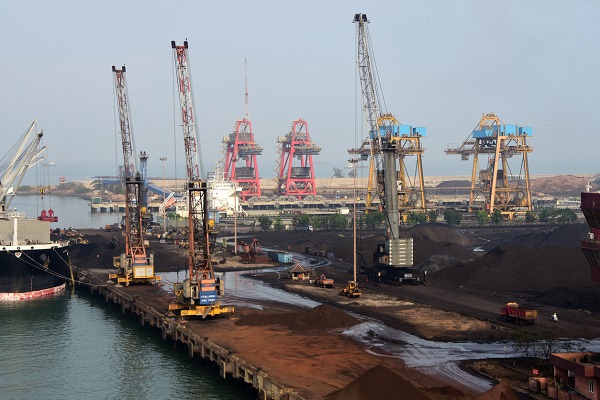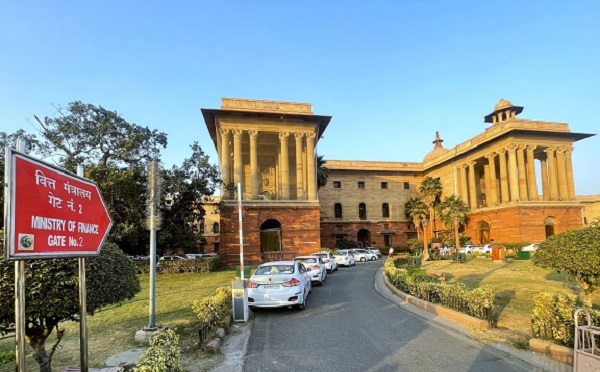.png)

Mahalingam, a financial regulator with 34 years at RBI oversaw market operations. Later shaped key policies at SEBI as a Whole-time Member.
February 19, 2025 at 4:02 AM IST
The rupee’s depreciation has triggered concerns across markets, but the framing of this discussion needs a correction. What we are witnessing is not a fundamental weakness in the rupee but rather the overwhelming strength of the US dollar. The dollar index has been on a sustained appreciation cycle.
Between October and February, the dollar index strengthened by about 6%. During the same period, the rupee depreciated by only 3.2%. That is a controlled move rather than an alarming fall.
The reality is that the rupee was held steady by the Reserve Bank of India for an extended period, delaying an inevitable adjustment. What we are seeing now is not an isolated phenomenon but a recalibration that aligns India’s currency with broader global trends.
Several factors have contributed to the rupee’s recent trajectory. The first is the movement of foreign portfolio investors. The rally in Indian equities had led many investors to believe that valuations were stretched. With global markets offering alternative investment opportunities, capital is flowing out of India. FPIs are booking profits and reallocating capital to other regions where they see better risk-reward prospects.
Another significant factor is the interest rate differential between India and the US. The Indian 10-year government bond is currently yielding around 6.8%, while the US 10-year Treasury is hovering around 4.5%.
A spread of approximately 230 basis points between 10-year US treasury bonds and 10-year Indian government bonds does not provide sufficient incentive to the foreign portfolio investors to retain the investment in government securities or to bring in fresh money, especially when the forward premia are ruling between 2.2% and 2.8%. This makes Indian bonds less attractive to global investors, prompting capital outflows that have added pressure on the rupee.
Moreover, global central banks have continued to reshape monetary policies, with the US Federal Reserve maintaining a relatively tight stance. This has kept the dollar strong, further reinforcing the depreciation pressure on the rupee. Additionally, external factors such as geopolitical tensions and commodity price fluctuations have played a role in driving capital away from emerging markets, including India.
There are a multitude of forces acting upon the rupee. It is not just domestic pressures or the RBI’s actions that determine its trajectory. Global factors, including geopolitical developments, play a significant role. For example, the policy shifts in the United States under Donald Trump had unpredictable ripple effects on emerging markets, including India. While it is difficult to pinpoint exactly where the rupee will settle, the interplay of these forces suggests that volatility will persist.
The third factor is the timing of these movements. While other currencies have adjusted more sharply to the dollar’s strength, the rupee remained artificially stable due to RBI’s interventions. The central bank’s strategy ensured stability for a while, but the underlying pressures did not disappear. Now, with the rupee catching up to the realignment seen in other currencies, the move appears more abrupt than it actually is. The depreciation is not an anomaly—it is part of a delayed adjustment that aligns the rupee’s value with global currency shifts.
REER Perspective
A key metric that helps assess the rupee’s valuation is the real effective exchange rate. This measure accounts for inflation differentials and trade-weighted currency movements, providing a more holistic view of a currency’s strength or weakness. Historically, REER has been a reliable anchor for the rupee, ensuring that its valuation remains in a sustainable range.
If the rupee moves towards 90-92 against the dollar, it should not be seen as a crisis. Based on REER calculations, such a move would still be within a reasonable band of fair value. Currency markets are inherently volatile, and periodic adjustments are a natural part of economic cycles. What matters is not the absolute level of the rupee but the pace at which it moves.
If the rupee depreciates to 90-92 gradually over six months, markets will have time to adjust. Importers can hedge their exposure, external commercial borrowers can manage their repayment strategies, and businesses can factor in higher costs. However, if the move happens abruptly within a few weeks, it could create turmoil. Importers, especially those with unhedged positions, would face higher costs, while external borrowers could see a sharp rise in debt servicing costs. This underscores the importance of an orderly transition rather than a sudden jolt.
Looking at historical depreciation cycles, the rupee has often moved in quick bursts. From levels of 31 to 37, then to 43, and later to 50-55, depreciation phases have been steep but brief. During Raghuram Rajan’s tenure, it climbed to 68 before retracing slightly. These phases typically result in an 8-10% depreciation within six to twelve months. If that same measure applies today, then a move from 80 to 90-91 could represent a temporary stopping point.
However, further movement will depend on global factors, particularly the dollar index. If the dixie strengthens again, additional pressure on the rupee is likely. That said, psychologically, 90-91 could act as a short-term stabilisation level before the next major move.
Rate Cut
The RBI’s recent interest rate cut has added another layer to this discussion. Some market participants argue that holding rates steady would have provided better support for the rupee. However, this perspective misunderstands the central bank’s core mandate.
RBI does not conduct monetary policy based on exchange rate movements. Its primary responsibility is balancing growth and inflation. At this juncture, inflation appears relatively benign, while economic momentum requires support. Given these conditions, the rate cut was both timely and appropriate.
Governor Sanjay Malhotra has also taken a prudent approach by avoiding any firm forward guidance on additional cuts. By keeping future moves data-dependent, the central bank maintains flexibility while signalling that its primary focus remains on domestic economic conditions rather than currency fluctuations.
Additionally, the RBI continues to manage liquidity conditions through open market operations and foreign exchange reserves to ensure that any sharp movements in the currency market do not translate into broader financial instability. By using reserves as a buffer, the central bank has the capacity to smooth out excessive volatility, reinforcing confidence in the rupee’s medium-term outlook.
The rupee’s trajectory will continue to be shaped by external factors—global risk appetite, the path of US interest rates, and capital flow trends. What matters most is that the adjustment remains orderly and within a sustainable range. A move towards 92 per dollar, if gradual, does not pose a systemic risk. India’s exchange rate framework, anchored in REER, has served the country well over the years. That remains the case today.




